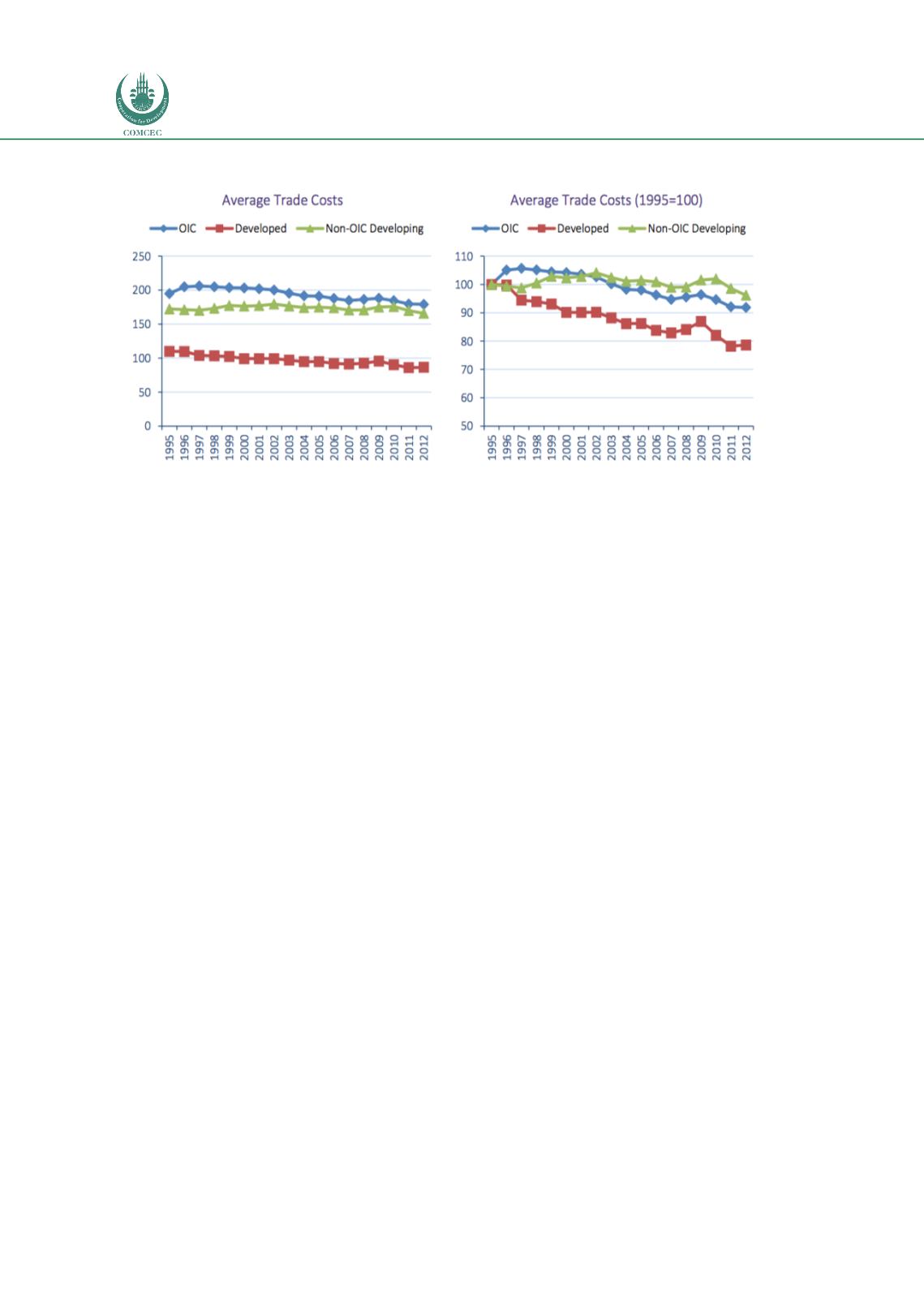

Improving Transnational Transport Corridors
In the OIC Member Countries: Concepts and Cases
68
Figure 25: Average trade costs
Source: OIC – SESRIC (2016), SESRIC staff calculation based on WB-UNESCAP.
4.2.4.
Social factors
Parallel to the development of infrastructure, in a micro-economic level, trade facilitation has a
direct impact on total logistical costs, the sum of time and money involved in moving traded
goods. Lower transport costs can lead to higher wages, thereby having a direct impact on
poverty reduction. The associated increase and broadening of the exports of a country can
reduce the vulnerability of the respective economy to exogenous shocks, increase the potential
for knowledge spillovers in specific sectors, and have a positive impact on foreign direct
investment (FDI) (Islamic Development Bank, 2011).
Within OIC policy, social objectives are highly prioritized. In November 2016 the OIC General
Secretariat adopted the OIC-2025, a Program of Action comprising of 17 priority areas. The
priority areas are peace and security, Palestine and Al-Quds, poverty alleviation, science,
technology and innovation, education, health, environment, climate change and sustainability
as well as culture and interfaith harmony and humanitarian action among others. The
economic component includes poverty alleviation, trade, investment and finance; agriculture
and food security; employment, infrastructure and industrialization; transport; energy;
tourism as well as entrepreneurship and SMEs development. Each priority area has specific
goals and actions.
OIC – SESRIC (2016) analyses the social capital within OIC. Different social protection and trust
mechanisms have been instrumental in supporting community development throughout
history. However, recent developments show that there are serious issues that undermine the
trust and social cohesion in OIC countries. Another important dimension of inclusive
development is wealth distribution, where the share of people with low welfare levels is
significantly higher than other country groups.
According to OIC – SESRIC (2016), the current level of social capital seems to be rather weak.
One of the traditionally most important strengths of OIC countries needs some attentions from
















